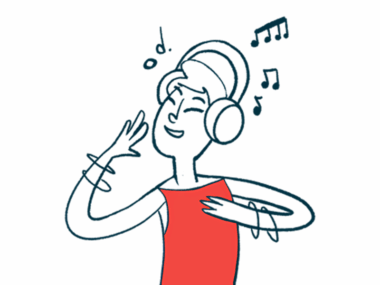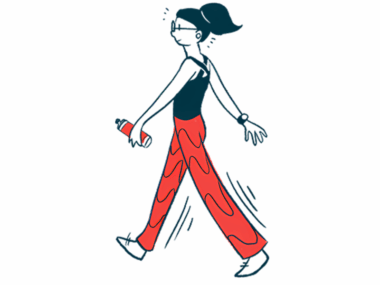Gait adjustments with AR different than what’s expected in Parkinson’s
Researchers tested feasibility of giving cues to modify gait in 20 healthy adults
Written by |

Visual and auditory cues delivered via an augmented reality (AR) headset were found to be feasible for adjusting gait among healthy young adults in a small recent study.
Cues like the ones provided in the study have been proposed for improving gait in people with Parkinson’s disease, however, many of the adaptations observed in the study were different than what might be expected in Parkinson’s patients.
“Ultimately, AR may be an effective means for provision of mobile, on-demand walking cues, but outcomes are specific to certain populations,” the researchers wrote. “Any new AR system developed for rehabilitation should examine how a population specifically responds to that system.”
The study, “Holographic Hintways: A systems feasibility and usability study of augmented reality cueing for gait adaptation,” was published in Gait & Posture.
The motor symptoms of Parkinson’s disease contribute to gait alterations and an increased risk of falls. Providing certain cues during walking are useful for adapting gait in both healthy people and Parkinson’s patients of all ages, research indicates.
Visual cues might include placing lines on the floor to guide a person’s walking path or auditory cues that produce a steady, rhythmic sound to guide their pace. Visual cues are thought to improve spatial aspects of walking, such as stride length, while auditory cues help with temporal aspects, that is, timing and rhythm.
AR is being increasingly employed in rehabilitation and typically involves wearing a headset that overlays holograms onto the normal field of vision. Essentially, a person still sees what they’d normally see, but their visual field is “augmented” by graphics.
Devices like these may be used to help cue gait, but the most feasible way to do this hasn’t yet been established.
Walking with AR
Here, researchers evaluated the feasibility of AR-delivered cues for modifying gait parameters in 20 healthy young adults, ages 18-35. All walked in a straight line under each of four different conditions in random order while wearing an AR headset — no cue (natural walking), with auditory cues, with visual cues, or with both auditory and visual cues.
During auditory cueing, the sound of a hard-soled shoe walking at a consistent cadence was played through the headset. The selected rhythm, 85 beats per minute, was chosen because it aligns with recent work involving Parkinson’s patients.
Visual cues involved displaying a transparent yellow shoe footprint at eye level, with footprints at a consistent distance from each other.
All types of cued conditions were associated with a significantly slower walking cadence compared to natural walking. Visual cues were associated with significantly decreased stride length compared to having no cues.
Cadence variability, that is, how inconsistent a person’s walking rhythm is, was significantly higher with auditory cues than with visual or no cues. Stance phase time variability, which refers to how long a foot is on the floor during a step cycle, was also significantly higher with visual and audiovisual cueing than in normal walking.
“The increased variability seen in participants receiving either visual or auditory cues may have allowed them to explore the range of coordination solutions to a novel walking context,” wrote the researchers, who said participants may be able to stabilize their walking patterns with longer use of the AR system.
Aligning with Parkinson’s gait
Many of these findings in healthy people “do not typically align with prior research,” in Parkinson’s patients, however.
For example, visual cues haven’t been previously linked to temporal aspects of gait in Parkinson’s, but were associated with cadence in this study.
Such discrepancies indicate “healthy walkers may adapt their gait differently to cues than those with PD [Parkinson’s disease],” the researchers wrote.
Participants rated the usability of the system as “good,” on average. Stance phase time variability during auditory cueing was a significant predictor of usability, while lower variability predicted higher usability scores.
While more work is still needed to understand the use of AR-mediated cues with Parkinson’s, the findings indicate AR cues could also be used in healthy people to improve work performance, the researchers said.
“While these occupational benefits of AR require further examination, the results of the present study are more generalizable to the working population rather than older adults with PD,” they said.





